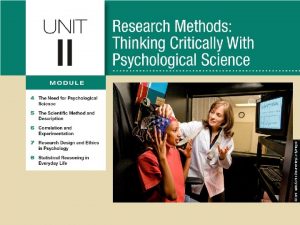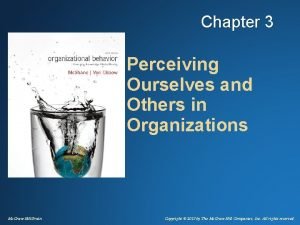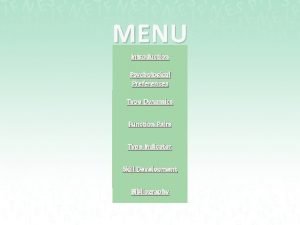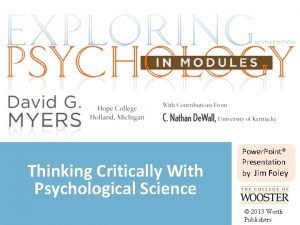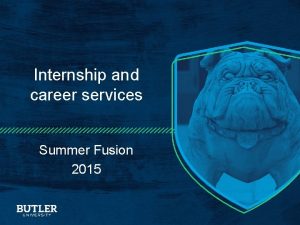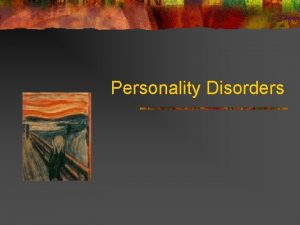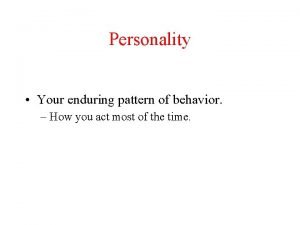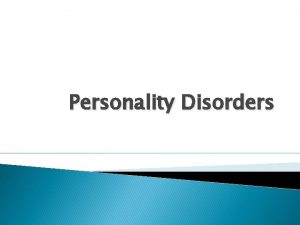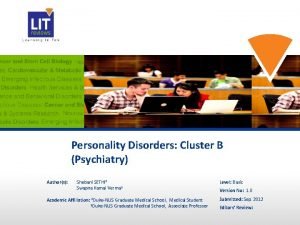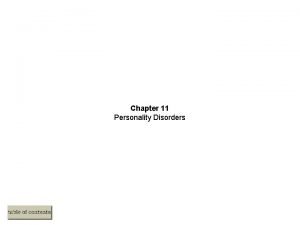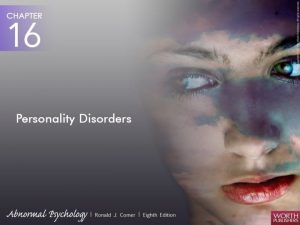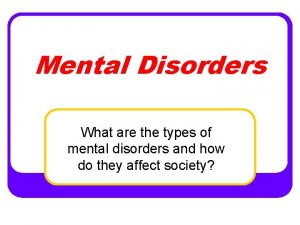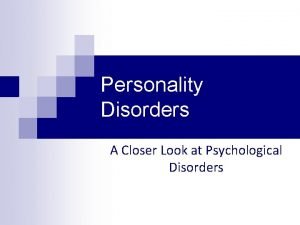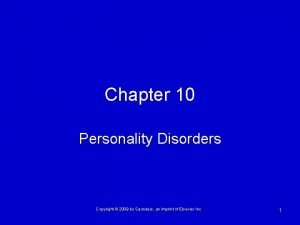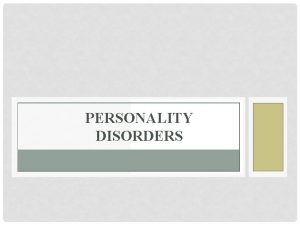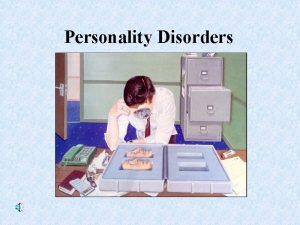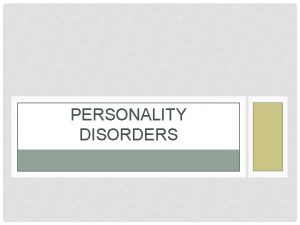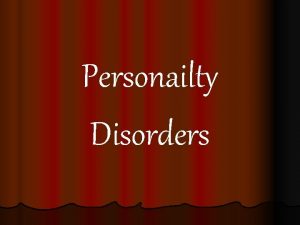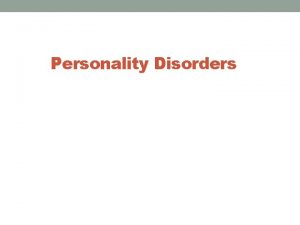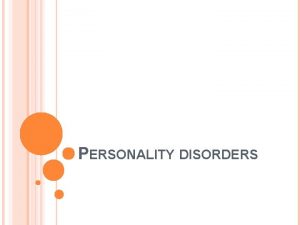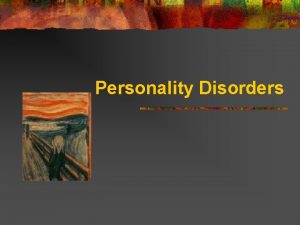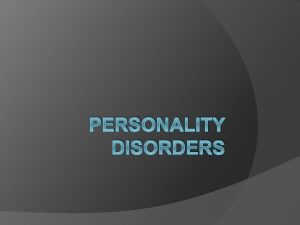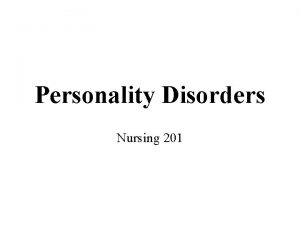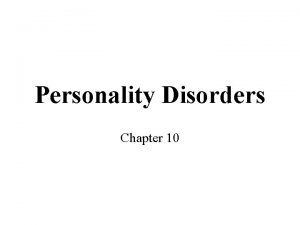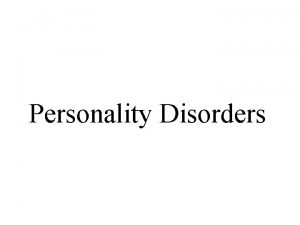Personality Disorders personality disorder enduring patterns of perceiving


















- Slides: 18

Personality Disorders

• personality disorder: enduring patterns of perceiving, relating to and thinking about the environment and oneself. . that are inflexible and maladaptive - cause functional impairment or subjective distress • • chronic originate in childhood – continue as an adult may or may not distress the person with the disorder listed on Axis II of the DSM-IV

• Cluster A: odd or eccentric beliefs • Paranoid p. d. • Schizotypal p. d. • Cluster B: dramatic, emotional, erratic • Antisocial p. d. • Borderline p. d. • Narcissistic p. d. • Histrionic p. d. • Cluster C: fearful disorders • Obsessive-Compulsive p. d. • Avoidant p. d. • Dependent p. d.

Antisocial Personality Disorder • failure to conform to social norms • deceitfulness • impulsivity • aggressiveness – repeated fights or assaults • disregard safety of self and others • irresponsibility • lack of remorse

• psychopathy: focuses on personality traits – some psychopaths do not have legal or severe interpersonal problems • • • Glibness/superficial charm Grandiose sense of self-worth Prone to boredom/need stimulation Pathological lying Conning/manipulative Lack of remorse

Genetic Influence • Crowe • “adopted away” children of felons had significantly higher criminality • Eysenck & Eysenck criminality concordance rate - Monozygotic – 55% - Dyzygotic – 13%

Neurobiological Influences • under-arousal hypothesis: abnormally low level of cortical arousal • fearlessness hypothesis: higher threshold for experiencing fear than others • differences in autonomic arousal • galvanic skin response (GSR): measure of sweating and autonomic arousal

• coercive family process – parents give into children to avoid problems • trauma • SES disadvantage • after age 40 – the psychopath begins to “burn out”

Borderline Personality Disorder • frantic efforts to avoid real or imagined abandonment • unstable and intense interpersonal relationships • unstable self-image or sense of self • impulsivity in ways that are harmful • recurrent suicidal behavior or self-mutilating • affective instability • chronic feelings of emptiness • inappropriate anger • transient paranoid ideation – severe dissociation

Linehan’s Theory of the Development of BPD • Based on a bio-social theory of BPD. Problems w/ Emotionall y Vulnerable Person An invalidating Environment 1. Ability to Understand & label feelings. 2. Coping skills. 3. Emotion modulation.

Treatment • medications: • tricyclic antidepressants and lithium • dialectical behavior therapy (DBT) – Linehan • help cope with stressors that trigger suicidal behaviors – learn to identify and regulate emotions

• histrionic personality disorder: express emotions in an overly dramatic fashion – often seductive in appearance - speech is vague, impressionistic • Lilienfeld and colleagues • Histrionic overlaps with antisocial p. d. – females histrionic – while males antisocial

• narcissisic personality disorder: pervasive pattern of grandiosity, need for admiration, and lack of empathy • Kohut – caused by a lack of empathic “mirroring” by parents early in development – child is fixated on self-centered grandiose stage of development

• paranoid personality disorder: excessively mistrustful and suspicious of others without justification

• schizoid personality disorder: pattern of detachment from social relationships combined with a limited range of emotions in interpersonal situations • schizotypal personality disorder: social isolation combined with odd or eccentric beliefs

Obsessive-Compulsive Personality Disorder • preoccupied with details, rules, lists, order, or schedules – point of activity becomes lost • excessively devoted to work and productivity to exclusion of friends and leisure • inflexible about matters of morality • can’t discard worn out items • can’t delegate tasks to others • miserly spending • rigidity and stubborn

• avoidant personality disorder: pattern of social inhibition, feelings of inadequacy, and hypersensitivity to negative evaluation • behavioral intervention techniques for anxiety and social skills problems • systematic desensitization • behavioral rehearsal

• dependent personality disorder: excessive need to be taken care of that leads to submissive and clinging behavior and fears of separation • agree with others even when they disagree to avoid rejection – cling to relationships
 Malingering
Malingering Perceiving order in random events examples
Perceiving order in random events examples Perceiving ourselves and others in organizations
Perceiving ourselves and others in organizations Judging or perceiving
Judging or perceiving Perceiving order in random events example
Perceiving order in random events example N vs s mbti
N vs s mbti Closure-oriented/judging vs. open/perceiving
Closure-oriented/judging vs. open/perceiving Perceiving vs judging
Perceiving vs judging Enduring patterns
Enduring patterns Enduring pattern of behavior
Enduring pattern of behavior Cluster c personality disorders
Cluster c personality disorders Cluster traits
Cluster traits Cluster c
Cluster c Dramatic personality disorders
Dramatic personality disorders Cluster a personality disorders
Cluster a personality disorders Schizotypal personality disorder
Schizotypal personality disorder Cluster b personality disorders
Cluster b personality disorders Dsm v personality disorders
Dsm v personality disorders Karla homulka
Karla homulka

